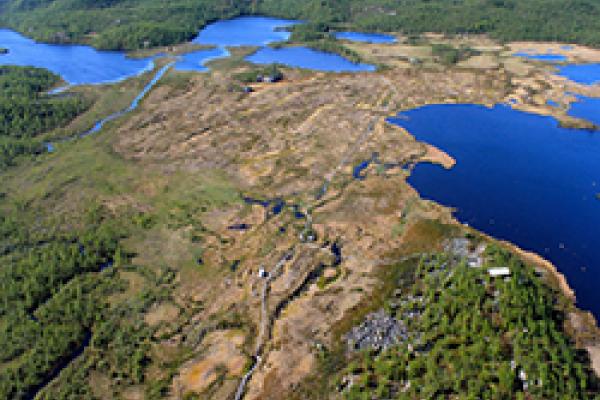Getting to know the microbes that drive climate change

Genetic details could improve predictions, guide efforts to slow damage
COLUMBUS, Ohio – A new understanding of the microbes and viruses in the thawing permafrost in Sweden may help scientists better predict the pace of climate change.
Microbes have significant influence over global warming, primarily through the production of – or consumption of – methane, and new details about these microscopic beings’ genetics is now available, thanks to a trio of studies from a project co-led by researchers at The Ohio State University.
The research appears in Nature, Nature Microbiology and ISME Journal.
“Because of global climate change, huge amounts of permafrost are rapidly warming. To microbes, they’re like freezers full of juicy chicken dinners that are thawing out,” said Virginia Rich, an assistant professor of microbiology at Ohio State and study author.
“In many cases, microbes take advantage of this situation to chew up what’s in the permafrost and breathe out methane. That methane really packs an environmental wallop, with 33 times the climate warming power of carbon dioxide.”
Many of these bacterial “consumers” and the viruses that influence them have been identified for the first time in these studies.
While scientists have a clear understanding of the dangers of thawing permafrost for releasing methane, they haven’t had a lot of details on the ins and outs of these microbial communities and their contribution to the process.
“The problem is, we don’t know all the microbes involved and how they will respond to climate change as the conditions get warmer and wetter, and to do a better job at predicting what will happen in the coming decades we need more information about the key players,” Rich said.
Matt Sullivan, a professor of microbiology at Ohio State and senior author on the virus study, said the research is also important because it contributes a great deal to the general understanding of what is happening in soil.
“While we’ve learned a lot about ocean viruses in recent decades, we know next to nothing about soil viruses,” he said. “This work’s viruses are so novel that they have doubled the total known viruses in the world.”
The multinational study was conducted in the portion of Sweden in the Arctic circle, one of the best places in the world to study thawing permafrost because of the rapid changes happening there and because of long-standing and well-documented scientific work in the area, Rich said.
A team of researchers from 10 organizations with expertise in a variety of areas including microbiology, geochemistry and climate modeling are working together in the IsoGenie Project, co-led by Ohio State’s Rich, to figure out how they can better predict future climate change based on improved understanding of the connections between microbes and geochemistry.
Original story written by Misti Crane. For full article, please visit Ohio State News.
